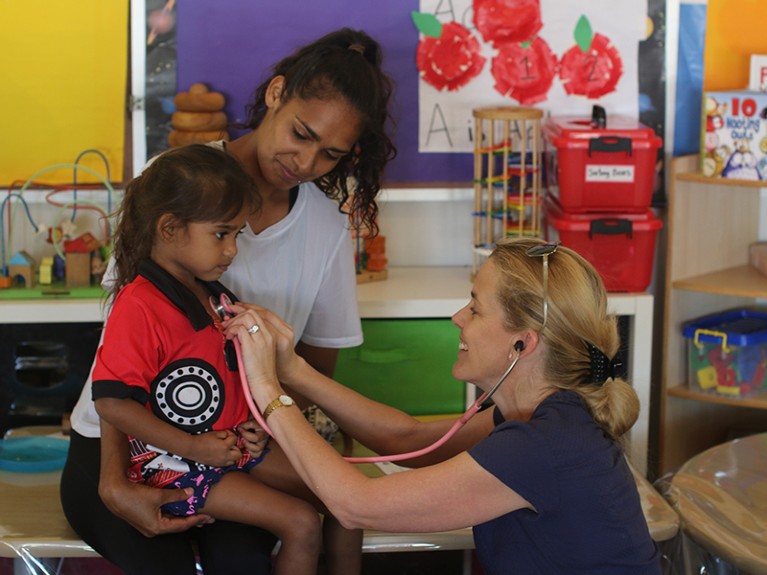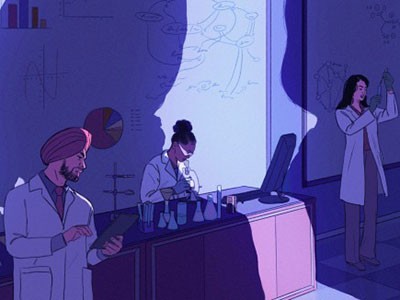
Pamela Laird (right) and her team have spent years earning the trust of Indigenous Australian mothers whose children participate in repiratory research.Credit: Pamela Laird
Historically in Australia, research has been a dirty word among First Nations communities, some of the most ‘researched on’ people in the country. They got no ownership of the data obtained from their participation, no recognition of their sovereignty and no help in building their own research capacity. But there’s been a national push to try to ensure that research is driven, and co-designed, by Indigenous Australians themselves. Increasingly, national funders, including the National Health and Medical Research Council, require grant applicants to provide evidence of Indigenous partnerships, including Indigenous leadership.
I am a paediatric respiratory clinician at the Perth Children’s Hospital. I conduct research at a Perth children’s hospital called the Telethon Kids Institute, and travel to remote areas where the majority of the state’s Aboriginal population lives. A wet cough that lasts for longer than one month is the earliest symptom of a chronic disease called bronchiectasis, which is characterized by scarred or damaged lungs. Roughly 1.5% of Aboriginal children in remote areas have bronchiectasis, a big problem in these communities. We’re trying to work out all the factors at play — including socio-economics and environmental hazards, such as dust. To offer help in a decolonizing way, my team, which is mainly non-Indigenous, must be invited into the community by the Elders and other key local members. It took two years of relationship-building to get invited in. It took another two years of conversations before we could commence research.
A lot of researchers don’t take that much time, but Western research models won’t work in First Nations. These communities are really hungry for health information — and because they could see that my colleagues and I were not going to cut and run, they embraced what we were trying to do. We made sure that respiratory physicians and trained clinical staff were able to provide help and training for local providers. As families got help, that developed more trust, and more community members got involved in what we were doing. It was incredible. We now have 94% recruitment rates for our studies in four remote communities.
The biggest lesson that I’ve learnt is first, do no harm. Also, do what you say you are going to do, and follow it up. You have to allow a lot more time for this approach, and you’ve got to maintain communication every step of the way. We put posters up when our clinicians were coming to the area. After each visit, we would tell the community how many kids were treated. When COVID-19 prevented us from travelling, we kept the conversation going through Facebook and video conferencing. It requires loads of patience because cultural differences will crop up. For example, you can spend Aus$5,000 (about US$3,500) to get a two- or three-person team out to a community, and then not be able to enter because there’s been a death and they are observing a month of mourning, called Sorry Business.
I advise researchers who want to work with these communities to have a strong grasp of our country’s history, as tragic as it is, and of Indigenous Australian culture. I mentor colleagues to be culturally sensitive, as well. When you walk into a room, be aware of the historical power differential between white, majority Australians and marginalized Aboriginal community members. Be aware, too, of the doctor–patient power imbalance.
At first, I wanted to find out how many kids had bronchiectasis, and I wanted to do computed tomography scans of their lungs to better diagnose disease. After six years, I’m still not there, but we’ve treated and saved more than 100 pairs of little lungs.


 Institutions must acknowledge the racist roots in science
Institutions must acknowledge the racist roots in science
 Imperialism’s long shadow: the UK universities grappling with a colonial past
Imperialism’s long shadow: the UK universities grappling with a colonial past
 Diversity in science: next steps for research group leaders
Diversity in science: next steps for research group leaders






